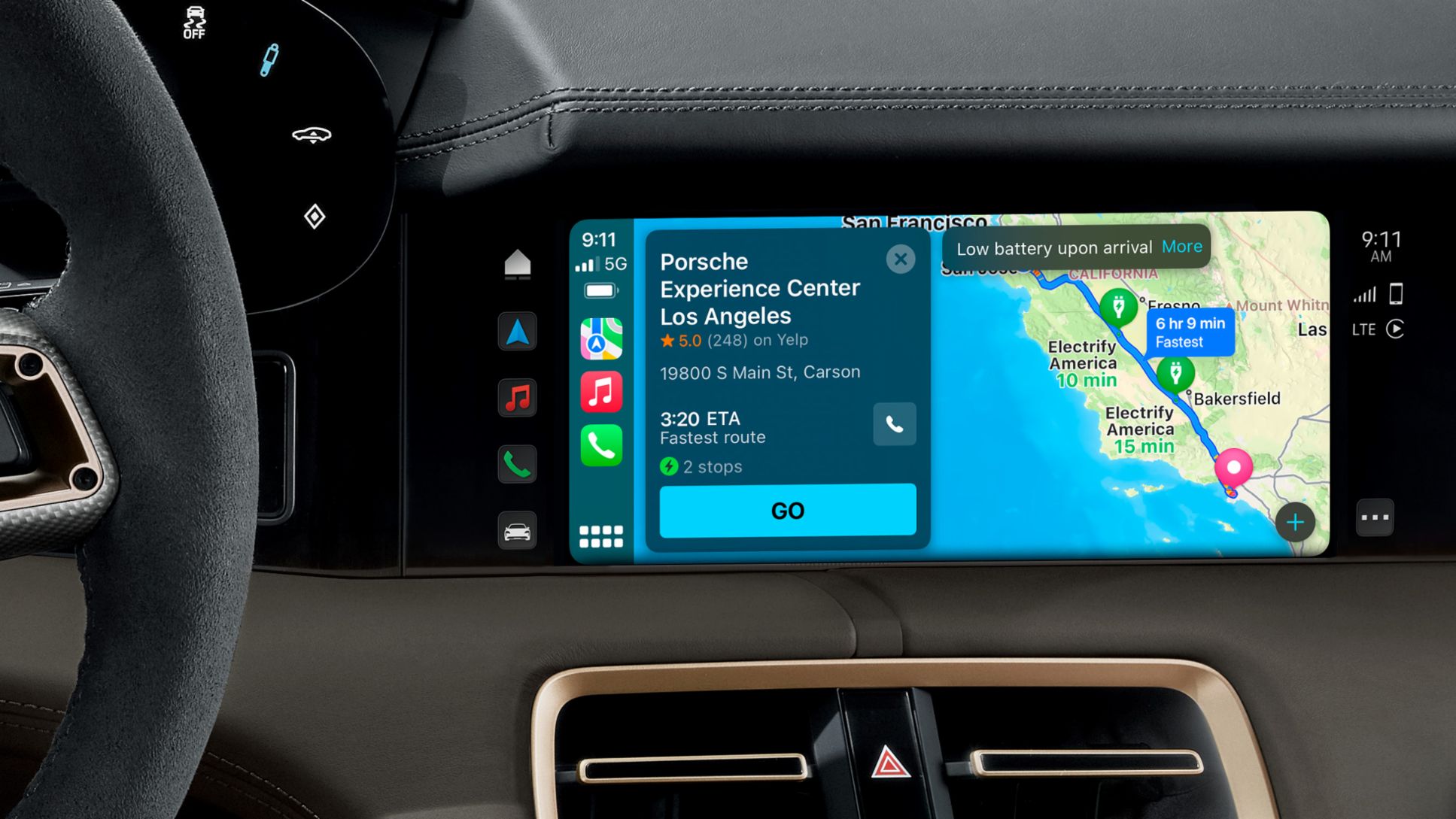Every Taycan comes equipped with the Porsche Charging Planner, which optimizes stops based on anticipated state of charge (SOC) upon arrival, traffic conditions, and your average speed. However, because drivers interact with their vehicles in a multitude of ways, including Apple® Maps EV Routing offers more choice in configuring a journey.
“We’ve listened to our customers, and they appreciate flexibility,” says Steffen Haug, Managing Director, Porsche Digital, Inc. “This integration with a product that they are already familiar with gives more options and confidence in how they use their Taycan, both in day-to-day activities and on longer road trips.”
Real-time vehicle information to help customers
Apple® Maps EV routing uses real-time vehicle information to help customers navigate to their destination, recommending charging stops when needed. By analyzing elevation changes along the route and other factors, Apple® Maps identifies appropriate charging stations along the way. If a customer drives until the charge gets too low, they are offered a route to the nearest compatible charging station.
Apple® Maps EV routing will be available for US-based Taycan owners that have the latest My Porsche app on their iPhone®. Enabling this new feature can be achieved with a few simple steps in the My Porsche App and Apple® Maps.

